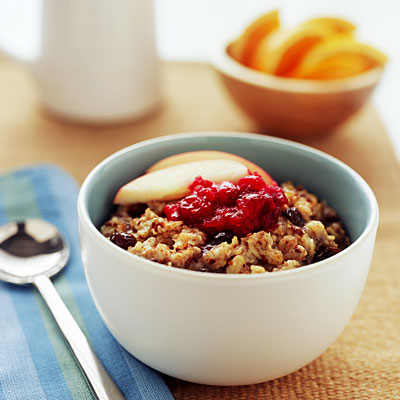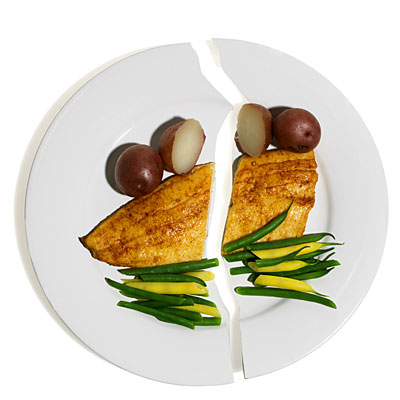 |
| www.brodericksorrell.com |
Following my new guideline will help your body return to it's natural size, and then staying on my guideline will allow you to achieve that dream body that you deserve.
http://www.amway.com/brodericksorrell
Avoid
1. Large amounts of read meat (and pork)
2. Fast food
3. Processed sugars (not natural sugar)
4. Alcohol (empty calories) If you're gonna drink, drink 1 bottle of water to one alcoholic beverage.
5. Dairy
6. Canned food
7. High fructose corn syrup
Must Have
1. Fruits. They satisfy your sweet tooth and are
loaded with disease-fighting nutrients, yet are low in calories. Keep a
stock of fresh, frozen, canned and dried fruits on hand. Eat them plain
or toss into cereal, yogurt, waffles or batters. Some convenient
favorites include frozen berries, dried cranberries and canned mandarin
oranges. Whole fruits are usually best because of their fiber content,
but if you prefer juice, be sure it's 100% juice, and enjoy it in small
portions.
2. Veggies. Keep a supply of prewashed mixed greens,
shredded carrots, steamed beets and shredded broccoli slaw on hand for
quick and nutritious salads. Roast sweet potatoes for a side dish that
needs no topping other than a little cinnamon, salt and pepper. If fresh
vegetables tend to become science experiments in your refrigerator, try
plain frozen vegetables. Canned vegetables are another option; just
rinse thoroughly to reduce sodium. For your lunchbox or a snack, try the
convenient packs of assorted veggie sticks with low-fat dip.
3. Calorie-Controlled Snacks. Little harm may be done
to your diet if you choose calorie-controlled snacks. While these foods
might not be the ultimate health food, sometimes you need a cookie and
these packs help you limit your portion. They eliminate the chance of
mindless eating so you can enjoy an indulgence without sabotaging your
diet.
Check the ingredient list and nutrition facts panel and try to find
snacks that offer some nutritional benefits. The most nutritious
calorie-controlled snacks will have less than 3 grams of fat, less than
140 milligrams sodium, 15 grams of sugar or less and made from whole
grain with about 2-3 grams of fiber and 7 grams of protein.
4. Healthier Fast Food. Every fast food restaurant
usually has healthy options. Fast food restaurants don't have to spell
disaster for dieters. Making the choices even easier are the nutrition
numbers posted on the menus. Opt for grilled chicken, salads with light
dressings, baked potato with chili or sub sandwiches with 6 grams of fat
or less.
5. Diet-Friendly Desserts. Lower-calorie and
portion-controlled sweets mean that desserts can usually be part of any
weight loss diet. Dieters who crave ice cream love novelty ice cream
cones, ice cream bars, frozen fruit bars and portion controlled treats
ranging from 75-150 calories. Cookie lovers can enjoy portion controlled
packs or simply choose plain cookies such as graham crackers, fig bars,
vanilla wafers or gingersnaps. On the road, try chewing on a piece of
sugarless gum or suck on a piece of hard candy to satisfy your sweet
tooth without sabotaging your diet.
6. Flavored Mustards and Vinegars. These add sizzle to
foods with very few calories. Try honey, tarragon, ginger, garlic,
wasabi or Dijon mustards. In the vinegar department, experiment with
balsamic, wine, herb, cider, champagne, fruit-flavored or sherry
vinegars. Drizzle vinegars over steamed veggies, use mustards in place
of mayonnaise or butter in recipes. When making salad dressings, use an
equal amount of vinegar to oil for a calorie-saving and delicious
vinaigrette.
7. Beverages. Good old-fashioned water still tops the
list of healthy drinks. But when you want something more, try these
virtually calorie-free options: flavored waters; powdered packets mixed
into bottled water; green, herbal or exotic teas; coffee; sparkling
water mixed with a splash of 100% fruit juice; vegetable juice or diet
soft drinks. Low-calorie alcohol options include light beer, wine
spritzers and cocktails mixed with club soda.
8. Breakfast Cereals. Research shows that people who
eat breakfast control their weight better than those who skip the
morning meal. Start your day the healthy way with a bowl of whole-grain
cereal (top it with fruit and low-fat dairy for extra nutrition). Look
for cereals with fiber and protein and not too much sugar, such as
oatmeal.
9. Lean protein. Lean protein is important for dieters
because it helps you feel satisfied. Excellent sources of low-fat
protein include eggs; skinless poultry, edamame or other beans; nuts;
shrimp; crab; fish fillets; lean cuts of beef (such as flank steak and
sirloin); and pork tenderloin. When choosing meat, go for lean cuts,
trim off all visible fat and control your portions. Rotisserie chicken
is a dieter's staple. Remove the skin and enjoy the lean poultry meat.
You can serve one as is, shred the leftovers for tacos, pasta dishes,
soups, stews, quesadillas, casseroles or chop it for an entree salad.
Not ready for chicken the next night? Debone it and freeze the leftover
meat for a quick meal later in the week.
10. Whole Grains. Most whole grains are a good source
of fiber, which helps fill you up. Try the wholegrain pasta blends or
brown rice ready-to-serve. Another dieter's favorite is fat-free popcorn
– crunchy, filling and a whole grain!



















